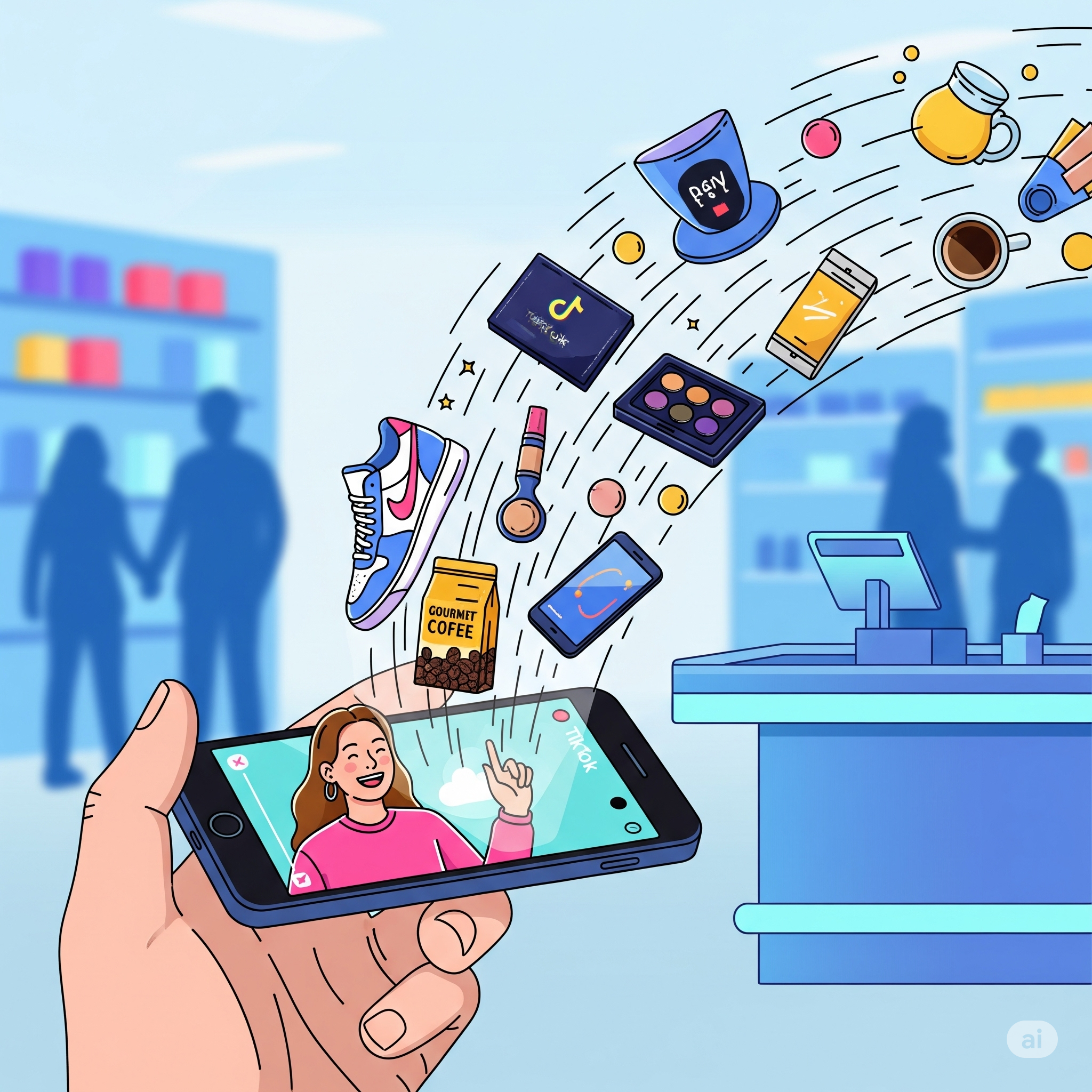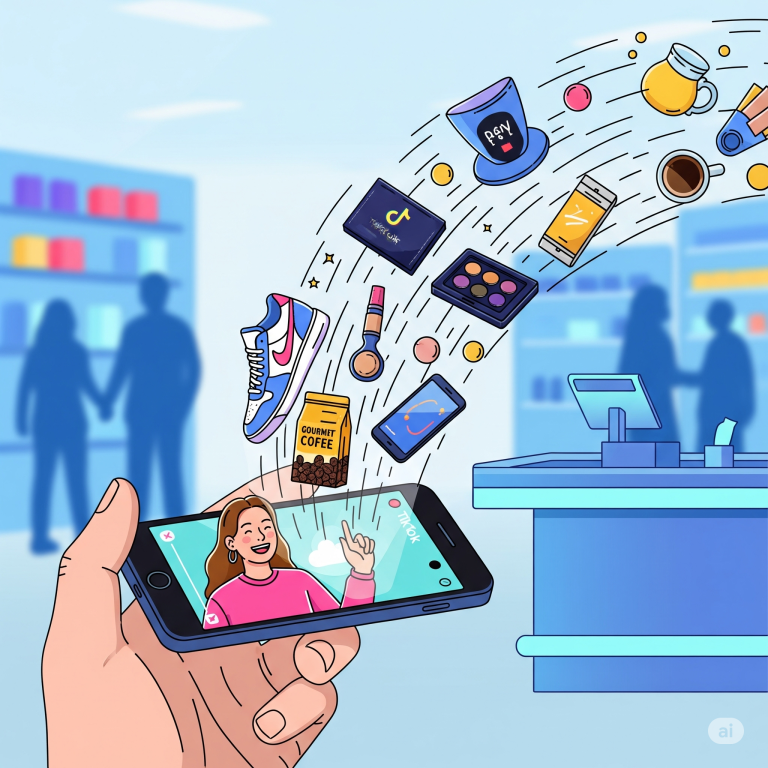
1. The New Age of Influence: Why Video Rules in 2025
In the past decade, the world has witnessed a remarkable transformation in how brands communicate with consumers. Television commercials once dominated, then blogs and static Instagram posts took the stage. But by 2025, video has emerged as the uncontested king of digital marketing.
Why? Attention. The modern consumer’s attention span is shorter than ever. According to recent studies, users make decisions about whether to watch or skip content within the first three seconds. Video — especially short-form video — caters perfectly to this reality. A 15-second TikTok clip or an Instagram Reel can entertain, educate, and convert, all before the viewer’s next thumb swipe.
The cultural dominance of platforms like TikTok, YouTube Shorts, and Instagram Reels has solidified this trend. Algorithms prioritize content that keeps people hooked, and video’s mix of audio, visuals, and storytelling makes it the stickiest format of all. In 2025, nearly 90% of digital marketers report video as their most effective medium, with influencer-driven campaigns outperforming traditional ads by a wide margin.
But it’s not just about algorithms. Video feels personal. Seeing someone smile, unbox a product, or share their real-life experience creates an authenticity static posts simply can’t match. This emotional connection is what propels consumers from simply watching to actually buying.
2. Micro-Celebs, Mega Impact: The Power of Niche Communities
Gone are the days when brands chased only celebrity influencers with millions of followers. In 2025, the real power lies with micro and nano influencers — creators with smaller, highly engaged audiences.
These creators often serve tight-knit communities around specific niches:
- A skincare enthusiast who tests serums for sensitive skin.
- A book reviewer who recommends cozy romance reads.
- A gamer who focuses on indie titles rather than blockbuster releases.
Their follower counts might range between 10,000 and 100,000, but their engagement rates often surpass those of mega-influencers. Why? Because their audiences trust them. Their recommendations feel genuine, more like a friend’s tip than a sponsored pitch.
Brands are waking up to this. A boutique coffee company, for example, may see far better ROI from ten micro-influencers across lifestyle and foodie niches than from one celebrity endorsement. The numbers prove it: research shows that campaigns with micro-influencers can achieve up to 60% higher engagement rates and often cost a fraction of big-name partnerships.
This shift signals a broader cultural change: trust has become the new currency. Audiences crave authenticity, and micro-influencers provide it in abundance.
3. Shoppable Videos and the One-Click Buy Revolution
Perhaps the most groundbreaking development in influencer video marketing is the rise of shoppable content. In 2025, viewers no longer need to leave a platform to make a purchase. A simple tap during a video takes them directly to checkout.
This seamless experience has revolutionized e-commerce. Imagine scrolling TikTok and stumbling upon a beauty influencer trying a new lip gloss. A tiny shopping bag icon appears. With one click, you’re adding it to your cart and checking out — all without leaving the app.
Platforms like TikTok Shop, Instagram Shopping, and YouTube’s shoppable tags are transforming video from an entertainment channel into a fully integrated sales funnel. Influencers no longer just drive awareness; they directly drive revenue.
Brands that adopt this strategy see staggering results. Viral “TikTok Made Me Buy It” products have sold out within hours — from kitchen gadgets to skincare creams. One notable case involved a small haircare brand whose $12 styling brush sold 10,000 units in under 48 hours after a micro-influencer’s video went viral.
The key here is frictionless commerce. Consumers no longer have to screenshot, search later, or jump between apps. In 2025, purchase intent is captured in the moment of excitement — and sealed instantly with a click.
4. From Entertainment to E-Commerce: Blurring the Lines
The beauty of influencer videos lies in their ability to disguise advertising as entertainment. Audiences don’t want to feel like they’re watching ads. They want to feel like they’re part of someone’s story.
This is why formats like:
- “Get Ready With Me” morning routines,
- Challenge videos (try-on hauls, dance trends),
- Unboxings and product reviews,
- Day-in-the-life vlogs,
perform so well. They’re fun, relatable, and feel spontaneous — yet they subtly weave in brand messaging.
For example, a travel influencer might film a vlog about a weekend getaway. Instead of a direct ad, they naturally showcase their luggage, skincare products, and even the app they used to book flights. Each mention feels like part of the story, not a sales pitch.
This blending of entertainment and commerce is creating a new consumer mindset. People don’t just buy because they’re told to; they buy because they aspire to the lifestyle they see in the video. The influencer becomes not just a promoter but a lifestyle curator.
5. The AI Boost: How Tech is Supercharging Influencer Content
Behind the viral clips and engaging personalities lies a powerful force: artificial intelligence.
In 2025, AI is transforming every aspect of influencer video marketing:
- Content creation: AI editing tools automatically cut long videos into snackable clips, add subtitles, and even generate multiple variations for A/B testing.
- Personalization: Algorithms can analyze an audience’s preferences and tailor influencer content accordingly.
- Virtual influencers: Entirely AI-generated personas are gaining traction. These avatars, like Lil Miquela in earlier years, now interact in real-time, generate custom videos, and even respond to fan comments.
- Predictive analytics: Brands can forecast which influencer partnerships will yield the highest ROI before launching a campaign.
AI also enables scaling. A single influencer can clone their voice, style, and presence into AI-powered avatars that produce content around the clock. While some critics argue this dilutes authenticity, others see it as a natural evolution — allowing creators to balance workload while still connecting with their audiences.
The synergy between human creativity and AI efficiency is unlocking possibilities never before imagined in marketing.
6. Authenticity vs. Advertising: What Audiences Really Trust
Yet with all these technological advances, one truth remains constant: authenticity wins.
Consumers in 2025 are savvier than ever. They can spot forced sponsorships or scripted lines instantly. A glossy ad disguised as influencer content often backfires, sparking skepticism rather than sales.
Instead, audiences gravitate toward influencers who:
- Use products genuinely in their daily lives.
- Share both pros and cons.
- Show behind-the-scenes reality (messy rooms, bloopers, honest struggles).
- Engage with their community authentically in comments and livestreams.
This is why many brands now encourage creators to have creative freedom in how they present products. Rather than strict scripts, they provide guidelines and let influencers weave the product naturally into their story.
The psychology is clear: people don’t just buy products, they buy trust. And trust is built when an influencer feels like a friend — not a salesperson.
7. What’s Next: Predicting the Future of Influencer Video Marketing
If the last few years have taught us anything, it’s that the world of digital marketing evolves at lightning speed. So what comes next for influencer video?
Here are some predictions:
- Immersive shopping with AR/VR: Influencer videos will let audiences “try on” clothes virtually or visualize furniture in their homes.
- Hyper-local influence: Neighborhood creators will rise, helping small businesses tap into local audiences.
- Voice-driven commerce: Influencer video + voice assistants (“Add this to my cart”) will merge seamlessly.
- Greater regulation and transparency: Expect stricter guidelines around disclosure, as governments keep pace with the fast-moving industry.
- Sustainability storytelling: As eco-consciousness grows, brands and influencers who highlight ethical practices will have a competitive edge.
The takeaway is clear: influencer video is no longer a trend, it’s the backbone of digital commerce. From TikTok to checkout tills, the journey from entertainment to purchase has collapsed into seconds — forever changing how consumers shop and how brands sell.
Final Thoughts
“From TikTok to Till” is not just a catchy phrase — it’s the reality of our digital age. What once took weeks of marketing campaigns and billboard placements can now happen overnight with a single viral video.
The winners in this space are those who embrace the power of authenticity, harness AI smartly, and create shopping experiences that feel effortless. Influencer videos aren’t just shaping consumer behavior; they’re redefining commerce itself.
For brands, the question is no longer if they should invest in influencer video marketing — but how quickly they can adapt before being left behind.




